#Jean Tournier
Text
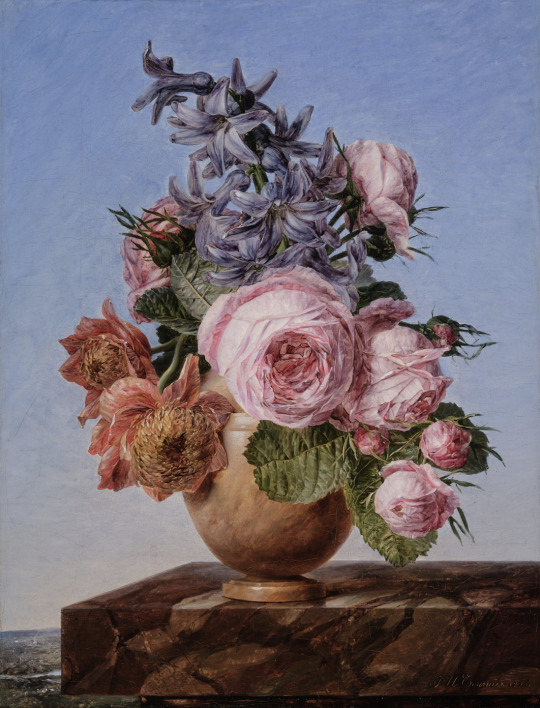
Jean Ulrich Tournier
Still Life with a Bouquet of Flowers in an Alabaster Vase on a Marble Ledge
#Jean Ulrich Tournier#Still Life with a Bouquet of Flowers in an Alabaster Vase on a Marble Ledge#m#art
10 notes
·
View notes
Note
can u make like. ur top 10 books. freak books. anything. kisses your brain
sure!! these r not gonna be ranked bc god knows i could never choose between them & also im gonna be annoying and ramble a bit about every one
death in venice by thomas mann (classic. but its so rich w metaphors and symbolism. if you do read it, i'd recommend reading "the uses of myth in death in venice" by isadore traschen afterwards, bc it does a great job explaining all the freudian allegories and mythological symbolism and u'll literally be tearing ur hair out afterwards over how brilliant thomas mann was)
the carnivorous lamb by agustín gómez-arcos (idc that i've already talked about this a gajillion times on here. its literally the best book i've ever read. i'll forever be obsessed and i wish there was literally anything that could ever hit as hard as this did. if u read it, anon (if u havent already) dont go through the carnivorous lamb tag on here bc u need to experience this without any big prior knowledge. trust me)
erotism: death and sensuality by george bataille (ik im just listing the classics atp. but how could i ever leave that one out. this ones a lot and depending on how into bataille & philosophy in general u are it could be too much. but if u havent already read this one anon, just read the introduction. trust me ure gonna loose it from that alone)
gemini by michel tournier (this one... took me ages to get through it on my first read bc of the way its written, but it was so worth it. not even gonna say much about this one - its basically like if twins by bari wood was good lmao)
incest: from a "journal of love": the unexpurgated diary of anais nin, 1932-1934 (or every anais nin diary ever in general, but this one especially. there was just no one that got it quite like she did)
indecent theology: theological perversions in sex, gender and politics by marcella althaus-reid (sorry for literally recommending theory. im pretty sure u were asking for fiction lol, but this (& althaus-reid in general) is everything to me. if u've any interest whatsoever in theology u should check this one out)
the sluts by dennis cooper (slightly controversial opinion i think? not that the book itself is controversial, just that dennis cooper is very hit and miss at times. this book tho, definite hit. its so intense and convoluted and i loved every second of it. read this before death and sensuality and u're guaranteed to think of nothing else for at least a month)
querelle of brest by jean genet ("those knock-out body fluids: blood, sperm, tears!". kind of a classic since theres also the fassbinder movie but i prefer the book tbh. its been a while since i've read it but it'll forever be in my favourites)
crash by j.g. ballard (yeah ik we've all seen crash but i need more ppl to read the book. hold on actually i need to insert one of my favourite bits from it here:
Reaching through the fractured windshields and passenger windows around me, I marked my semen on the oily instrument panels and binnacles, touching these wound areas at their most deformed points.)
ada, or ardor: a family chronicle by vladimir nabokov (one of the most beautiful books i've ever read. probably not the most helpful recommendation bc im pretty sure its a classic but i cant not mention it.)
also some bonus recommendations of books that didnt make the list bc they're either not freak books or bc i havent read them yet:
christopher and his kind by christopher isherwood (not a freak book. not even remotely. but will forever have a special place in my heart.)
the sparrow by maria doria russell (read this one anon!!! this would be on the list, but im not fully finished w it yet so i cant officially put it in my top 10 yet)
exquisite corpse by poppy z. brite (havent read that one yet but its on my list!!)
autobiography of red by anne carson (not a freak book. beautifully written, a work of art really)
as meat loves salt by maria mccann (havent read that one yet. hoping its as good as everyone says)
skagboys by irvine welsh (one thing about me is that i'll always find a way to mention the trainspotting books)
#u guys r feeding my ego big time w these media asks.#i love doing lists ngl. just waiting patiently until the 'top 10 favourite academic papers?' ask drops lmao#also mwah <3 @ u anon. kissing u for that ask#oh also anon: if u havent already read carnivorous lamb and decide to check it out - u neeeed to listen to velvet voices by townes van zand#while reading it. theres no bigger reason behind that. its just that i listened to it on loop while reading#and that was literally a spiritual experience#ask
59 notes
·
View notes
Text


Quelle découverte !
Toujours pas remise de ma lecture de Gorge d’Or, roman finlandais de cette dernière rentrée littéraire, je cherchais un livre qui puisse lui ressembler, au moins un peu… ça m’a conduite, par ricochets divers, à la découverte de cet écrivain norvégien, né à la fin du XIXe et mort en 1970. Tarjei Vesaas. Un inconnu total pour moi… quoique.. j’avais lu dans Télérama une critique au sujet de ce qui est considéré comme son chef-d’œuvre : Les oiseaux, nouvellement traduit aux éditions Cambourakis.
Alors. Le palais de glace n’a rien à voir avec Gorge d’Or. Mais c’est une merveille. Une lecture qui ressemble à une expérience entre veille et sommeil. Les commentateurs l’identifient comme un conte symboliste, ça me paraît pertinent. Cela ressemble à un conte énigmatique qui parle d’enfants, mais ne leur serait pas vraiment destiné. Ou peut-être que si, s’ils lisent avec les yeux fermés (façon de parler), avec leurs rêves accessibles, sans attendre d’action tonitruante, en écoutant leurs émotions les plus incompréhensibles.
Vous avez le résumé de la nouvelle traduction de l’édition la plus récente. Ce n’est pas celle que j’ai lue, j’ai lu le livre dans l’édition GF, plus ancienne. Je ne peux juger de l’amélioration apportée ou non par Jean-Baptiste Coursaud, mais je serais curieuse de lire cette autre version.
Ce que je peux dire pour l’instant, c’est que le style de l’auteur est très simple. Il progresse dans son récit par petites touches, petites phrases plutôt courtes, qui ne sont pas complexes mais qui sont bien souvent énigmatiques. Il semble vouloir rendre compte des émotions successives et étranges que les petites filles éprouvent l’une pour l’autre, puis à l’égard de quelque chose qui les dépasse, ou bien qui les submerge.
L’attention à la nature est admirable. On passe de l’automne au printemps, du début de la formation de ce palais de glace (une cascade gelée) à son effondrement. Siss, l’une des deux fillettes, passe de l’innocence à la tristesse puis à la tentation nouvelle d’une vie autre qui coïncide au printemps où un garçon la trouble, mais elle ne veut pas trahir son amie avec laquelle elle a passé un pacte impérieux.
Je ne vais pas enfermer ce récit dans mon interprétation, mais je me contenterai de lancer quelques pistes. Les deux fillettes qui s’adorent évoque pour moi quelque chose de tout à fait concret, la dévotion enfantine que l’on peut avoir en amitié ne me paraît pas du tout saugrenue. Elle peut aussi revêtir une dimension symbolique puisque les deux fillettes sont apparemment opposées. On peut se demander si la perte de lune par l’autre ne correspond pas au passage de l’enfance à l’adolescence, qui va de pair avec l’envie de réconfort en même temps qu’un malaise soudain vis à vis des parents.
Peu importe, ce sont des fils, des chemins, tracés dans la neige, des lueurs qui vibrent à travers les parois du palais de glace, si beau, si mystérieux ; un refuge, un danger, un lieu de rêve, un secret, un tombeau. Au lecteur de se laisser prendre par la main par le narrateur qui pose des questions et des bouts de réponses comme des cailloux scintillants dans son récit, au lecteur de les ramasser en fonction de la résonance qu’ils créent en lui. La dimension onirique est si présente qu’elle fait du récit un texte qui résiste à l’analyse, ce qui permet sûrement de survivre aux années, et font de lui un joyau qui est célèbre en Norvège, et qui se fraie apparemment enfin un chemin jusqu’à nous. Une lecture marquante.
PS : c’est chouette de le lire fin décembre, dans un monde qui manque singulièrement d’enchantement. Une lecture qui m’a rappelé Michel Tournier ou Karen Blixen.
PS 2 : j’ai mis la 1ère de couverture de l’édition anglaise de Pinguin Books parce que je la trouvais belle.
#Tarjei Vesaas#littérature#livres#litterature#roman#livre#littérature norvégienne#conte#palais de glace
7 notes
·
View notes
Link
0 notes
Photo
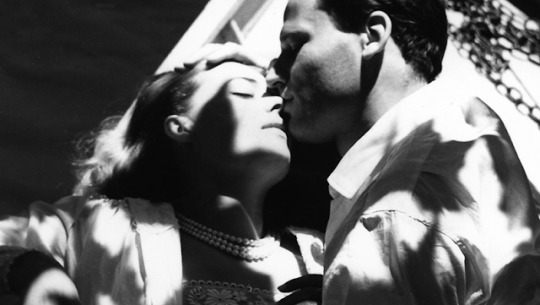
Jeanne Moreau and Jean-Marc Bory in The Lovers (Louis Malle, 1958)
Cast: Jeanne Moreau, Jean-Marc Bory, Alain Cuny, Judith Magre, José Luis de Villalonga, Gaston Modot. Screenplay: Louise de Vilmorin, based on a novel by Dominique Vivant. Cinematography: Henri Decaë.
Anna Karenina without the train. That's one way of looking at Louis Malle's once-scandalous but now somewhat tepid The Lovers. That seems to be the way the German censors saw it: a story about a woman who abandons not only her husband but also her child, and seemingly gets away with it. In the German release, the scenes involving Jeanne Tournier's (Jeanne Moreau) daughter were cut, as if the idea of a mother leaving so adorable a child was too horrible for audiences to contemplate. In the United States, of course, it was the depiction of sex -- not "cutting away to the window" as Malle once described the traditional approach to sex scenes -- that caused the censors to draw their knives. The result was the Supreme Court decision that The Lovers didn't fit Justice Potter Stewart's famous definition of pornography: "I know it when I see it." He didn't, and it isn't: What we see in the scene are a briefly flashed nipple and the look on Jeanne's face as Bernard (Jean-Marc Bory) brings her to orgasm. Even the fact that she is being pleasured orally by him is only implied by his absence in the frame. The Lovers is more satiric than erotic, its targets the stale marriages and pro forma affairs of an haute bourgeoisie obsessed with hairstyles and polo games. Malle attempts to contrast the sterile dalliances of the idle rich with the more spontaneous relationship between Jeanne and Bernard, a casually dressed archaeologist who drives a clunky tin-can Citroën, but the film gets a little too formulaic, especially in the lushly romantic moonlight stroll and boat ride that serves as foreplay to the consummation of their affair. He switches back to irony at the end: Jeanne and Bernard escape together under the astonished gaze of her husband and her other lover, but we sense their uncertainty about whether it will work, anticipating the way Mike Nichols tempered romance with reality by holding the camera just a little bit too long on Benjamin and Elaine after they escape from the church in The Graduate (1967). Maybe we don't see the train but we hear it approaching.
0 notes
Text
Michael man photo school portrait pdf
MICHAEL MAN PHOTO SCHOOL PORTRAIT PDF >>Download (Telecharger)
vk.cc/c7jKeU
MICHAEL MAN PHOTO SCHOOL PORTRAIT PDF >> Lire en ligne
bit.do/fSmfG
l'art de la photographie pdf
michael mann
le portrait artistique en Grande-Bretagne : D.O. Hill et R. Adamson ; J.M. Cameron Alfred Stieglitz (USA), The Hand of Man, 1902, photogravure. 17 juin 2021 — L'œuvre de Michael Schmidt rassemble des portraits, des autoportraits, to photography in the context of German post-war and contemporary. avec Michael Michlmayr 28 Juste absente, par Jean-Loup Trassard 33 La Chambre Portrait du conservateur en artiste empaillé, par FRANCE MARIE FRÉMEAUX. Thémadoc -La photographie en France (2) De Lartigue à Man Ray View PDF. Portraits dans la littérature de Flaubert à Proust, 15 TOURNIER, Michel. territoriale, à l'image de Marie Curie (née en où elle fait la connaissance de Man Ce texte est de Michel Dreyfus, il est issu. 19 déc. 2012 — Le duo d'artiste Michael Clegg et Martin Guttmann travaille Portrait of a Photography Dealer : a Rejected Commission ( 2001) est une - China Projects/100 x 100, Real Fake Art, The Real Toy Story, Shanghai Gallery m97,. Shanghai, Chine. - Fake – Portraits of Chinese Copy Art, Goethe Institute, Aziz+Cucher, Untitled (After Man Ray), série Dystopia, 1996, c-print digital, 101.6x127cm. CYBERPORTRAIT : L'IMAGE NUMÉRIQUE ET LE VISAGE HUMAIN. Bertillon, « Comment doit-on faire un portrait judiciaire ? », dans Du bon usage de la photo- graphie. Une anthologie de textes (éd. Michel Frizot et
https://www.tumblr.com/cohenaquc/698141681529356288/born-out-of-love-anne-mather-scribd-pdf, https://www.tumblr.com/cohenaquc/698141998545338368/diyafah-international-school-abu-dhabi-map-pdf, https://www.tumblr.com/cohenaquc/698142687064440832/hara-vilasam-pdf-files, https://www.tumblr.com/cohenaquc/698141998545338368/diyafah-international-school-abu-dhabi-map-pdf, https://www.tumblr.com/cohenaquc/698142282014179328/corso-di-portoghese-brasiliano-pdf-files.
1 note
·
View note
Text
« Nimier écrit en français direct vivant, pas en français de traduction, raplati, mort », proclamait Céline dans une lettre à un confrère et néanmoins ami, pour dire son estime à l’égard d’un cadet. Il est vrai que Roger Nimier (1925-1962), disparu comme Albert Camus ou Jean-René Huguenin dans un accident de voiture, s’était démené sans compter pour sortir Céline du purgatoire.
Le fils spirituel de Georges Bernanos
C’est l’une des nombreuses facettes de cet écrivain attachant qu’étudie avec rigueur et sympathie Alain Cresciucci dans une biographie qui est aussi et surtout le portrait d’ « une génération heureuse qui aura eu vingt ans pour la fin du monde civilisé ». Génie littéraire à la monstrueuse précocité, dont son condisciple Michel Tournier a témoigné, Roger Nimier publia sept livres, cinq romans (dont Le Hussard bleu) et deux essais (dont Le Grand d’Espagne), en cinq ans, avant même d’atteindre la trentaine. Un météore donc, lui aussi, qui, en quelques années, s’impose comme le chef des Hussards, ces impertinents qui se rebellent contre le règne des idéologues marxistes et des pions humanitaires – Sartre et tutti quanti. « Libertin du siècle », comme il se définissait lui-même, Roger Nimier fut le fils spirituel de Georges Bernanos, qu’il rencontra lors de son retour d’exil. Mais aussi de Malraux et de Drieu la Rochelle, et, bien plus haut, de Retz et de La Rochefoucauld.
L’éditeur de Céline et Morand
Romancier mélancolique, critique implacable, éditeur d’élite chez Gallimard (Céline et Morand lui doivent leur renaissance), dialoguiste de cinéma (entre autres pour Louis Malle dans le sublime Ascenseur pour l’échafaud), Nimier aurait pu devenir, sans cet accident stupide au volant d’une Aston Martin, l’un des maîtres de sa génération.
Quinze ans après sa mort, son ami Pol Vandromme, inconsolable, le saluait en ces termes : « Son existence est humble et aristocratique. Il a découvert le rugby dont le goût rejoint bientôt chez lui celui des armes anciennes, du dessin, de la papeterie, des condiments, du champagne et de l’eau fraîche, tout ce qui brûle ou ce qui glace, tout ce qui fait la vie plus sage et plus virile, plus fidèle et plus forte. »
Christopher Gérard - 2018
illustration : Maurice Ronet et Jeanne Moreau dans "Ascenseur pour l'échafaud", de Louis Malle, scénarisé par Roger Nimier.
1 note
·
View note
Photo
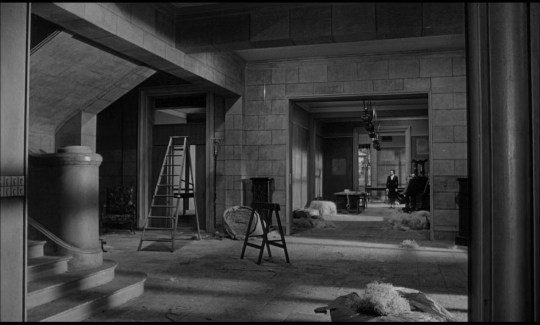
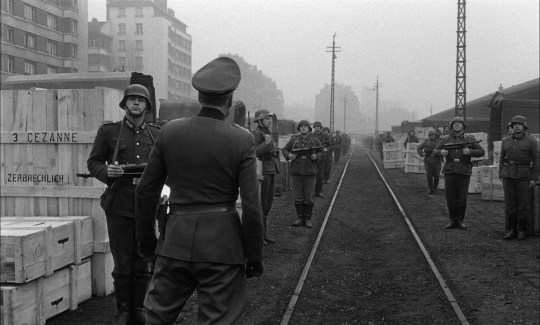



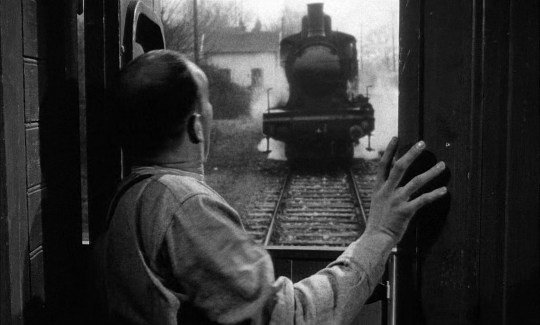

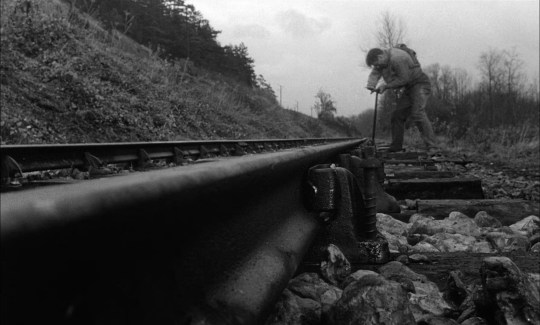


The Train (1964) dir. John Frankenheimer, cinematography by Jean Tournier & Walter Wottitz
5 notes
·
View notes
Photo

A long time ago I worked for the CIA.
Target, Arthur Penn (1985)
#Arthur Penn#Howard Berk#Don Petersen#Gene Hackman#Matt Dillon#Gayle Hunnicutt#Randy Moore#Ilona Grübel#Tomas Hnevsa#Jean Pol Dubois#Josef Sommer#Guy Boyd#Jany Holt#Herbert Berghof#Jean Pierre Stewart#Jean Tournier#Michael Small#Richard P. Cirincione#Stephen A. Rotter#1985
15 notes
·
View notes
Photo
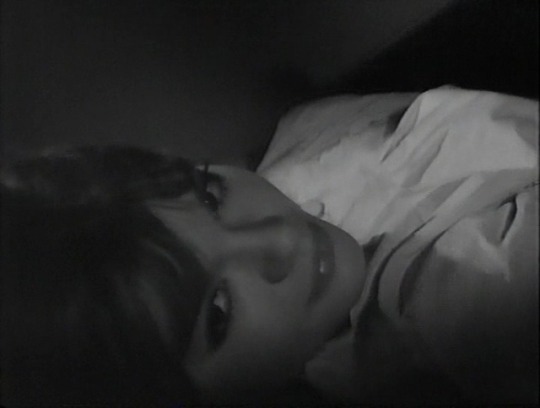
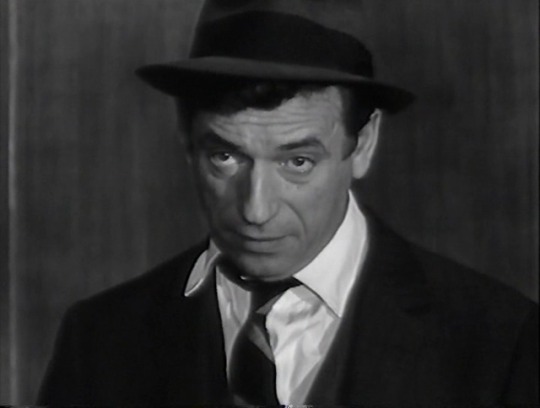
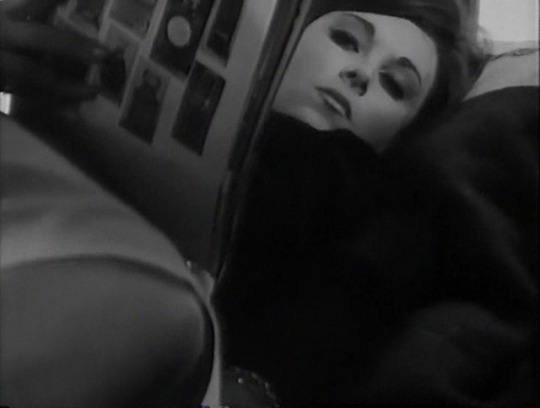



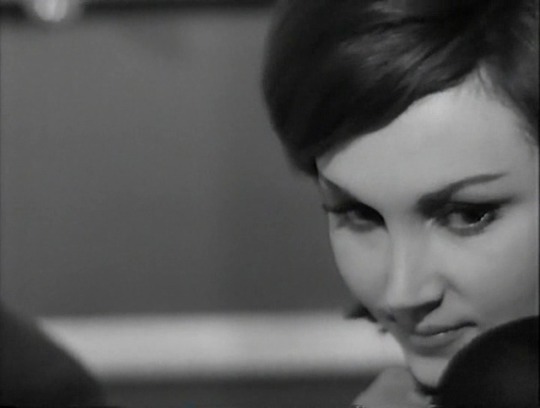

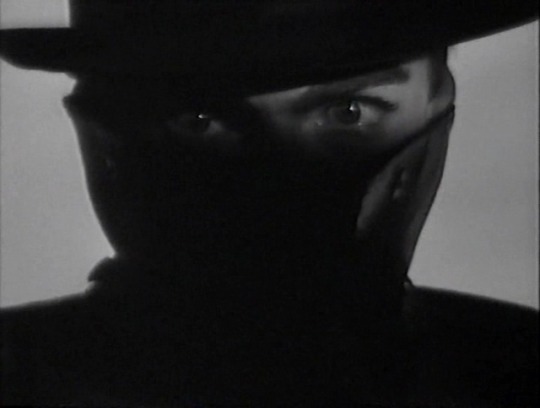
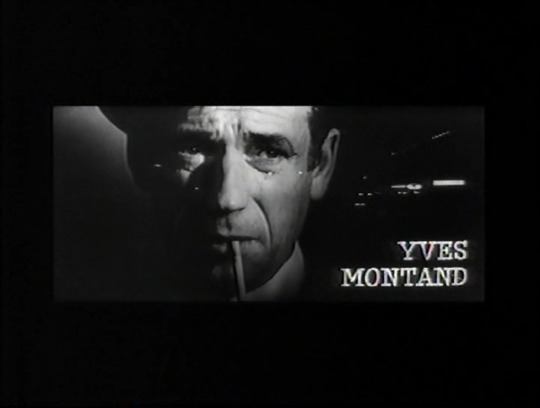
compartiment tueurs / the sleeping car murders (fr, costa-gavras 65)
#compartiment tueurs#the sleeping car murders#costa-gavras#yves montand#pascale roberts#michel piccoli#bernadette lafont#jean tournier
24 notes
·
View notes
Photo
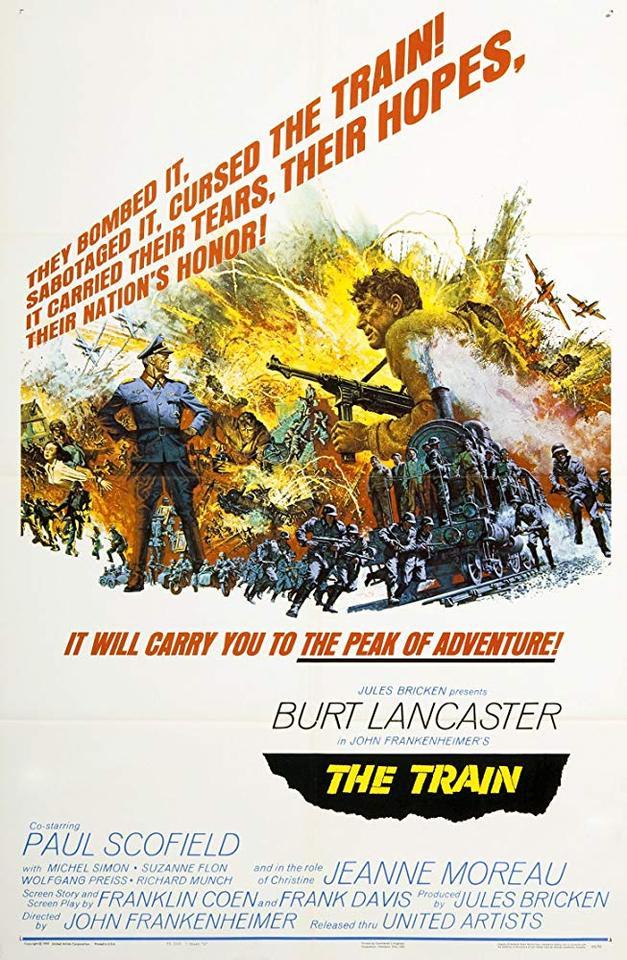
The Train (1964)
by John Frankenheimer
Acción / Drama / Suspense / Guerra
133 mn - France / United States of America
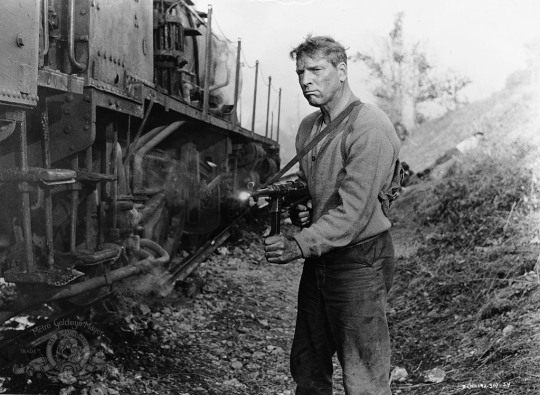




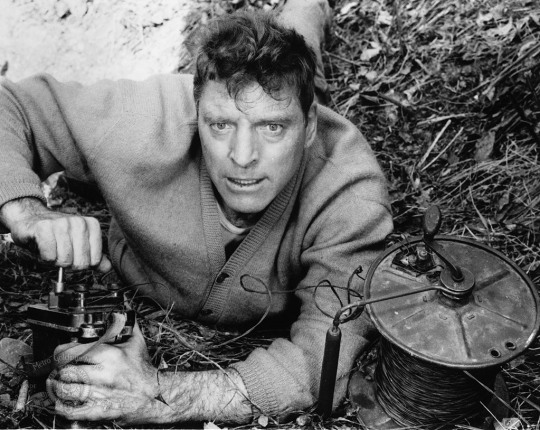


#1964#60s#john frankenheimer#war#action#jean tournier#walter wottitz#jules bricken#maurice jarre#franklin coen#frank davis#burt lancaster#paul scofield#jeanne moreau#suzanne flon#michel simon#howard vernon#wolfgang preiss#usa#albert rémy
2 notes
·
View notes
Photo


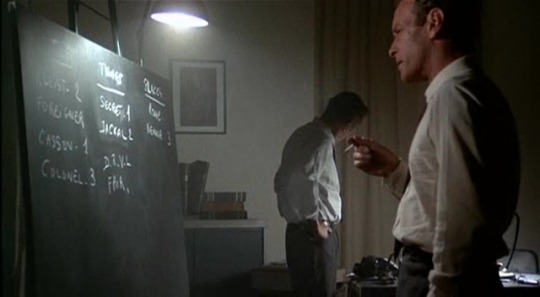
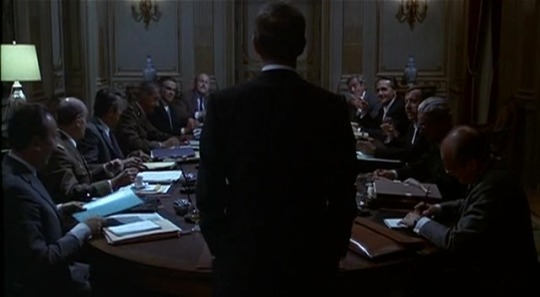

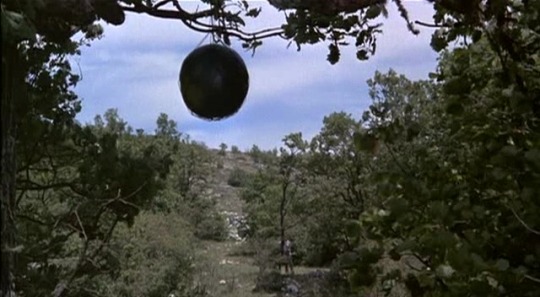
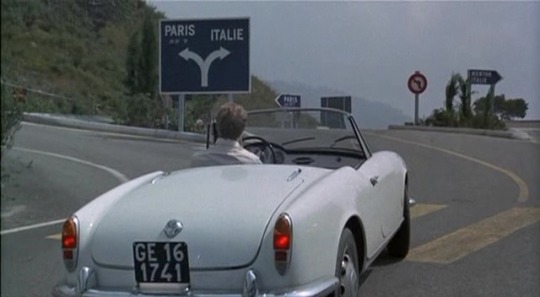


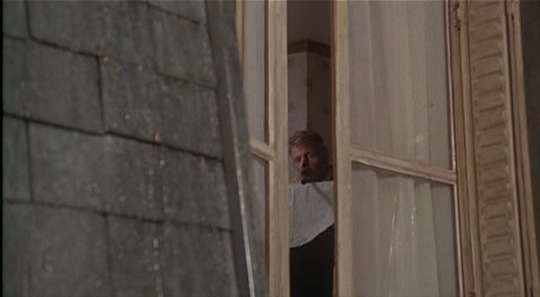
The Day of the Jackal (1973)
Director - Fred Zinnemann, Cinematography - Jean Tournier
“You must understand that this is a once-in-a-lifetime job, whoever does it can never work again…”
#scenesandscreens#the day of the jackal#edward fox#fred zinnemann#jean tournier#terence alexander#alan badel#michel auclair#denis carey#tony britton#adrien cayla-legrand#cyril cusack#maurice denham#vernon dobtcheff#derek jacobi#michael lonsdale#delphine seyrig
76 notes
·
View notes
Text
"Jean Cocteau said he preferred cats to dogs because no one has ever seen a police cat."
– Michel Tournier
2 notes
·
View notes
Photo

2 notes
·
View notes
Text
diciannove dicembre
Alfa Castaldi, Parfum Karl Lagerfeld, Milan, 1983
Convinto
Era un granchio molto convinto.
Si riteneva all’altezza del fiore.
Passava davanti alla nostra casa
Senza neanche volgere lo sguardo.
Sembrava fosse a bordo di una carrozza principesca.
Procedeva lentamente
Come da protocollo
Per ricevere applausi.
Troppo convinto.
Non si fermò neppure a mangiare la guaiava.
(Penso che chi va in…
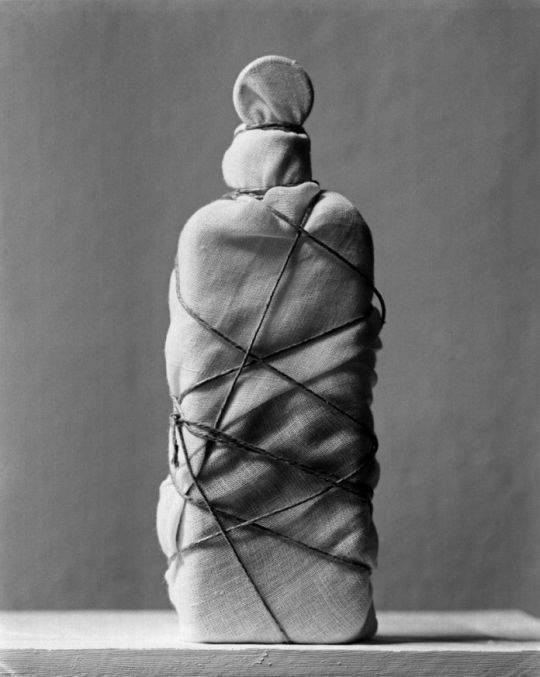
View On WordPress
#Alfa Castaldi#Bob Brookmeyer#Giulio Ricordi#Graziana Pentich#Guido Gozzano#Italo Svevo#Jean Genet#José Lezama Lima#Manlio Cortelazzo#Manoel de Barros#Michel Tournier#Milcho Leviev#Tim Parks
2 notes
·
View notes
Photo

Le Monde's 100 Books of the Century
Starting from a preliminary list of 200 titles created by bookshops and journalists, 17,000 French participants responded to the question, "Which books have remained in your memory?" (Quels livres sont restés dans votre mémoire?).
The list includes both classic novels and genre fiction (Tolkien, Agatha Christie, A. C. Doyle), as well as poetry, drama and nonfiction literature (Freud's essays and the diary of Anne Frank). There are also comic books on the list, one album from each of these five francophone series: Asterix, Tintin, Corto Maltese, Blake and Mortimer and Gaston. The large number of French novels of the list is due to the demographics of the surveyed group. (Likewise, comparable lists by English language sources—- such as the two lists of Modern Library 100 Best Novels published in 1998, one by the Board of the Modern Library and the other by readers who responded—- disproportionately favor British and American authors. Non-English language works were not eligible for the two Modern Library lists.)
1. The Stranger & The Outsider Albert Camus
2. In Search of Lost Time & Remembrance of Things Past Marcel Proust
3. The Trial Franz Kafka
4. The Little Prince Antoine de Saint-Exupéry
5. Man's Fate André Malraux
6. Journey to the End of the Night Louis-Ferdinand Céline
7. The Grapes of Wrath John Steinbeck
8. For Whom the Bell Tolls Ernest Hemingway
9. Le Grand Meaulnes Alain-Fournier
10. Froth on the Daydream Boris Vian
11. The Second Sex Simone de Beauvoir
12. Waiting for Godot Samuel Beckett
13. Being and Nothingness Jean-Paul Sartre
14. The Name of the Rose Umberto Eco
15. The Gulag Archipelago Aleksandr Solzhenitsyn
16. Paroles Jacques Prévert
17. Alcools Guillaume Apollinaire
18. The Blue Lotus Hergé
19. The Diary of a Young Girl Anne Frank
20. Tristes Tropiques Claude Lévi-Strauss
21. Brave New World Aldous Huxley
22. Nineteen Eighty-Four George Orwell
23. Asterix the Gaul René Goscinny and Albert Uderzo
24. The Bald Soprano Eugène Ionesco
25. Three Essays on the Theory of Sexuality Sigmund Freud
26. The Abyss Zeno of Bruges Marguerite Yourcenar
27. Lolita Vladimir Nabokov
28. Ulysses James Joyce
29. The Tartar Steppe Dino Buzzati
30. The Counterfeiters André Gide
31. The Horseman on the Roof Jean Giono
32. Belle du Seigneur Albert Cohen
33. One Hundred Years of Solitude Gabriel García Márquez
34. The Sound and the Fury William Faulkner
35. Thérèse Desqueyroux François Mauriac
36. Zazie in the Metro Raymond Queneau
37. Confusion of Feelings Stefan Zweig
38. Gone with the Wind Margaret Mitchell
39. Lady Chatterley's Lover D.H. Lawrence
40. The Magic Mountain Thomas Mann
41. Bonjour Tristesse Françoise Sagan
42. Le Silence de la mer Vercors
43. Life: A User's Manual Georges Perec
44. The Hound of the Baskervilles Arthur Conan Doyle
45. Under the Sun of Satan Georges Bernanos
46. The Great Gatsby F. Scott Fitzgerald
47. The Joke Milan Kundera
48. Contempt/A Ghost at Noon Alberto Moravia
49. The Murder of Roger Ackroyd Agatha Christie
50. Nadja André Breton
51. Aurélien Louis Aragon
52.The Satin Slipper Paul Claudel
53. Six Characters in Search of an Author Luigi Pirandello
54. The Resistible Rise of Arturo Ui Bertolt Brecht
55. Friday Michel Tournier
56. The War of the Worlds H.G. Wells
57. If This Is a Man Se questo è un uomo, Survival in Auschwitz Primo Levi
58. The Lord of the Rings J.R.R. Tolkien
59. The Tendrils of the Vine Colette
60. Capital of Pain Paul Éluard
61. Martin Eden Jack London
62. The Ballad of the Salty Sea Hugo Pratt
63. Writing Degree Zero Roland Barthes
64. The Lost Honour of Katharina Blum Heinrich Böll
65. The Opposing Shore Julien Gracq
66. The Order of Things Michel Foucault
67. On the Road Jack Kerouac
68. The Wonderful Adventures of Nils Selma Lagerlöf
69. A Room of One's Own Virginia Woolf
70. The Martian Chronicles Ray Bradbury
71. The Ravishing of Lol Stein Marguerite Duras
72. The Interrogation J.M.G. Le Clézio
73. Tropisms Nathalie Sarraute
74. Journal, 1887–1910 Jules Renard
75. Lord Jim Joseph Conrad
76. Écrits Jacques Lacan
77. The Theatre and Its Double Antonin Artaud
78. Manhattan Transfer John Dos Passos
79. Ficciones Jorge Luis Borges
80. Moravagine Blaise Cendrars
81. The General of the Dead Army Ismail Kadare
82. Sophie's Choice William Styron
83. Gypsy Ballads Federico García Lorca
84. The Strange Case of Peter the Lett Georges Simenon
85. Our Lady of the Flowers Jean Genet
86. The Man Without Qualities Robert Musil
87. Furor and Mystery René Char
88. The Catcher in the Rye J.D. Salinger
89. No Orchids For Miss Blandish James Hadley Chase
90. Blake and Mortimer Edgar P. Jacobs
91. The Notebooks of Malte Laurids Brigge Rainer Maria Rilke
92. Second Thoughts Michel Butor
93. The Origins of Totalitarianism The Burden of Our Time Hannah Arendt
94. The Master and Margarita Mikhail Bulgakov
95. The Rosy Crucifixion Henry Miller
96. The Big Sleep Raymond Chandler
97. Amers Saint-John Perse
98. Gaston Gomer Goof André Franquin
99. Under the Volcano Malcolm Lowry
100. Midnight's Children Salman Rushdie
Daily inspiration. Discover more photos at http://justforbooks.tumblr.com
78 notes
·
View notes